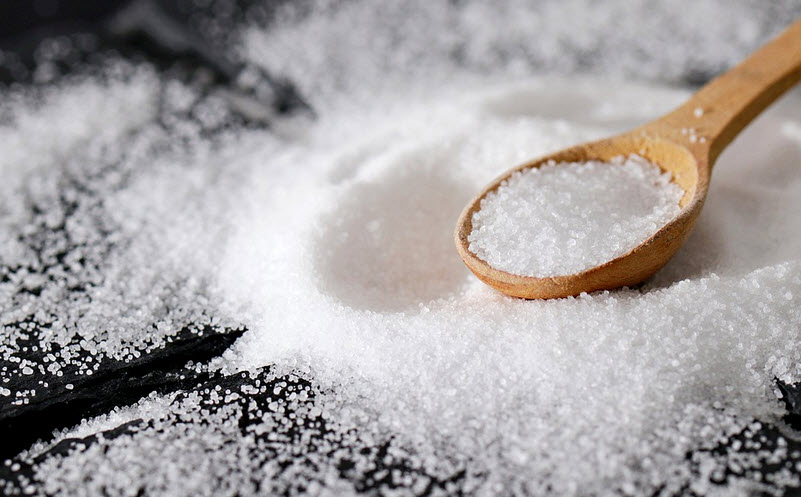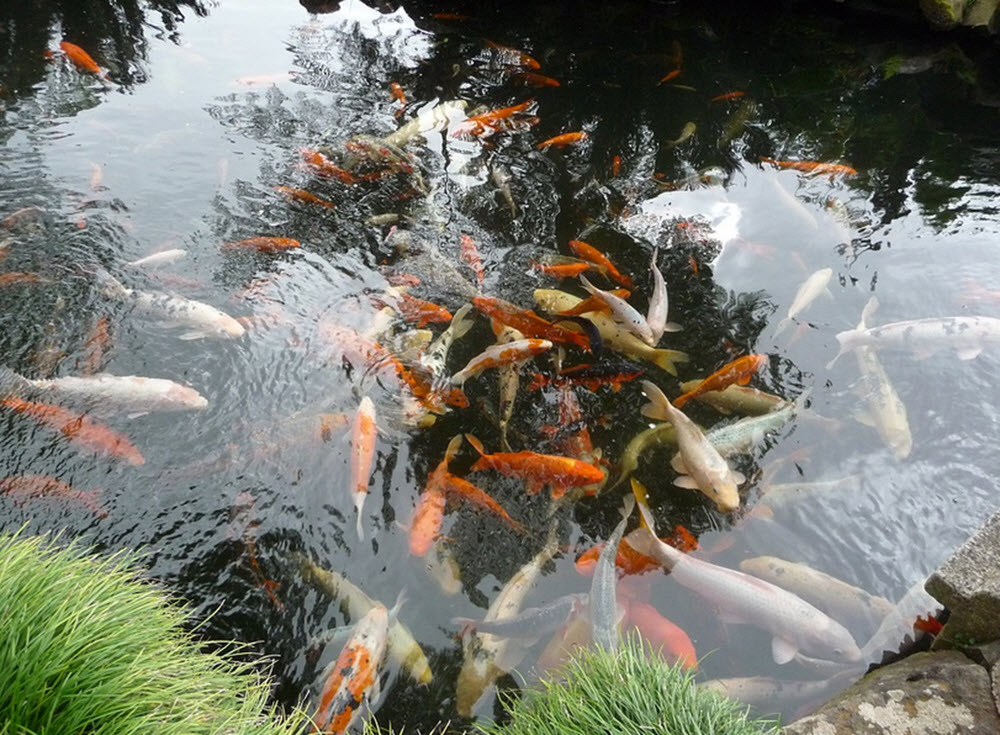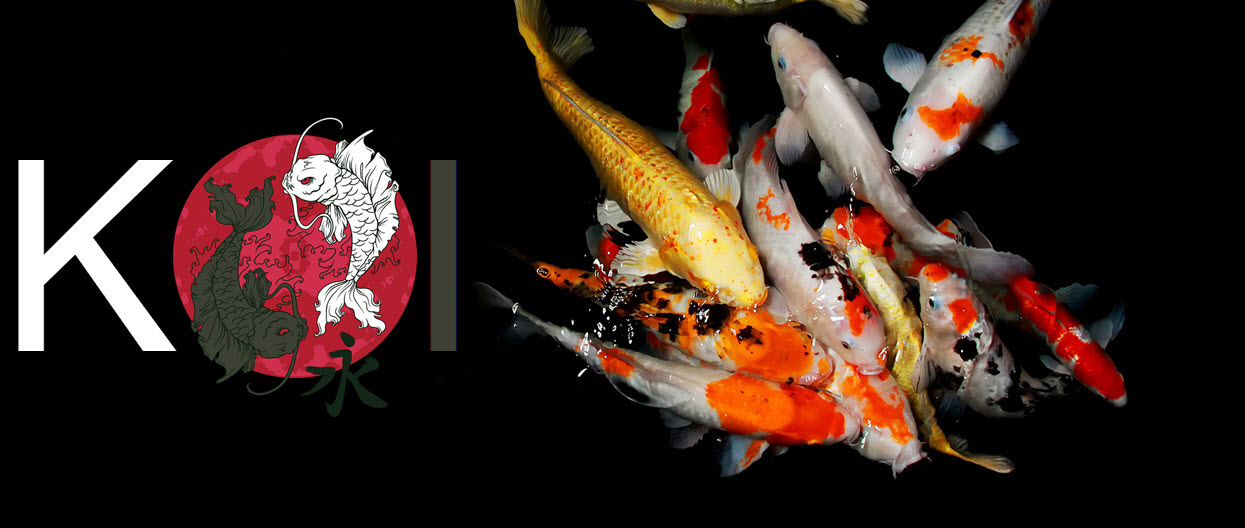In Japan, many breeders use salt in their ponds to help prevent health problems with their fish. This might sound strange since koi are not saltwater fish, but the trick is to keep the salt level much lower than in the ocean. There is a certain level where the salt will be detrimental to many parasites without harming the koi. Of course, adding too much salt will harm the koi and can be lethal for them. Among other things, it can ruin their kidneys.

Important: Take the biological filtration of the pond, and the requirements of any plants, into consideration before you decide to use salt. In some situations, catching koi and treating them in a separate tank is better. That will buy you some time to research how to eradicate the problem from the main pond without causing too much harm.
Why use salt?
- There are many parasites that are sensitive to salt. Adding salt can kill them, or at least make the environment less suitable for them.
- Some bacteria are sensitive to salt, including a type of columnaris bacteria known to attack koi.
- Salt can help fight nitrite toxicity.
- According to some koi breeders, salt in the water improves the mucous slime coat production in their fish.
Which salt should I use?
The tradition in Japan is to use pure non-iodized sodium chloride (NaCl) salt. This similar to ordinary table salt, but no iodine or other extras has been added.
Important: Combining salt and formalin in the koi pond is not recommended.
Why does salt work against many parasites?
The ancestors of koi were wild carps living in freshwater, so the parasites that attack these wild carps – and domestic koi – tend to be developed for freshwater conditions too. Therefore, they are not good at handling salt in the environment.
Important: Some koi breeders have reported that certain types of parasites in their ponds seem to be developing an increased resilience to salt. This is not surprising, as salt has been used for a long time now in koi ponds and evolution will favour parasites capable of handling salt.
Improved osmotic regulation?
According to one theory, salt in the water will also help the koi recover from illness by balancing its osmotic regulation.
The salt concentration inside a koi is much higher than the surrounding freshwater in which it lives. Through the natural process known as osmosis, this will create a situation where water is sucked into the body where possible. The fish will release excess water by peeing, in order to keep its balance within the body.
When a fish is stressed, e.g. due to serious illness, its ability to maintain this balance can become weakened.
If the difference between the salt concentration inside and outside the fish is decreased by adding salt to the freshwater, the pressure from osmosis will be reduced, and the fish will need to struggle less with maintaining balance. In short, water will be less “eager” to enter the body of the fish and the fish can more easily stay balanced while it recovers from the illness.

What is the recommended salt concentration for illness treatment?
Increasing the salt concentration in the koi pond to 0.3% have proven helpful against a variety of pathogens. This saltiness is still very low compared to the ocean, where the salt concentration is around 3.5%.
After the treatment, you perform one or more water changes to bring the saltiness down again.
Examples of problems that can usually be treated with a salt concentration of 0.3% are:
- Chilodinella (treat for 24-36 hours)
- Costiasis (treat for 24 hours)
- Epistylis (treat for 24-36 hours)
- Glossatella (treat for 24 hours)
- Ichthyophthirius (at tropical temperatures, at treatment period of 72 hours is usually required)
- Trichophrya (treat for 24 hours)
- It is also worth known that a 0.3% salt concentration is known to inhibit reproduction for trematodes.
Important:
- For some problems, a much longer treatment period is required than the ones noted above. Some parasites will not go away until after 2-3 weeks, since eggs keep hatching.
- In some cases, the right approach is to go higher than 0.3% salt. Start at 0.3% salt concentration and then gradually go up to 0.5% or oven 0.6% for treating illness. Raise the level over the course of several days, and always use the salt meter to get an exact reading.
Adding the salt
- Make sure you have the right type of salt and a digital salt meter. Without a salt meter, it is very easy to go wrong and end up with too much or too little salt in the pond. You can find more information about salt meters further down in this article.
- If you have time to delay treatment, ideally perform a 50% water change first.
- Remove any plants that should be removed.
- Calculate approximately how much salt that will be needed for your pond.
- Let the salt dissolve in a bucket of water before adding that saline solution to the pond. Adding it dry can injure the koi.
- Add saline solution gradually and use your salt meter to check the salt concentration. Remember: It is easier to add than to remove. If you accidentally add too much, add freshwater to balance it.
- Regularly check the salt concentration during the treatment period. Adjust as necessary. Water evaporation can increase the salt concentration.
- When the treatment is over, use partial water changes to bring the salt concentration down again. Keep using the salt meter during the process. Do not pour salty water into parts of your garden where salt can cause damage.
Using salt when a problem has been spotted
Many koi keepers use salt as a first line of treatment for their ponds. It is easy to keep at home and can be dispersed as soon as you notice a health issue with any of the fish, even if you are not 100% sure exactly what is causing it. Yes, it would be better to make an accurate specialized diagnosis first and treat for that specific problem instead – but while you wait for that to happen (including getting hold of the specialized fish vet), the fish might die and the disease might spread.
Using salt in the quarantine tank
When you bring home a new fish, it is strongly recommended to keep it in a quarantine tank first before you introduce it to the other fish. This gives you a better chance to notice if there is anything wrong with it, which could spread to the other fish. It is also easier to treat the fish, if needed, when it is kept separate.
Even if your new fish looks fine and behaves normally, keeping it in a quarantine tank where you have added salt to the water is a good idea. The stress of being moved can be enough to cause an outbreak of something the fish is normally capable of handling without help. The salt will help against a wide range of problems.
Naturally, normal recommendations regarding gradual acclimatization to a new tank should be adhered to.
Should I always add salt for winter?
Some koi keepers recommend adding salt prior to every winter season, while others recommend only adding salt when there is a health issue. There is no consensus.
Those who do add salt even when there is no problem typically go with a 0.1% salt concentration. That equals 1 kg of salt per 1,000 litres of water.
Giving a salt dip instead
In some situations, a salt dip is better than treating the whole pond. This entails removing the koi from the pond and placing it in a container where you have made the water quite salty. Since you only leave the koi in the salty water for a short time, you can (and need to) make the water very salty. The general recommendation is to dissolve as much salt as possible in the water.
This method works best for external parasites or skin infections, where you have s chance of killing the parasites without injuring the koi.
Important: This method is dangerous and can kill the koi if done improperly. Discussing the details with an experienced fish keeper or fish veterinarian beforehand is recommended to get everything right. There is a pretty small window to work with here, where the treatment is strong enough to treat the problem without injuring or killing the fish.
Get a digital salt meter
If you consider using salt with your koi, we strongly recommend you get yourself a digital salt meter first. No matter how accurate your mathematical calculations are, nothing beats getting an actual reading of the water.
- There might be some salt left in the water from a previous treatment, and if you add the “correct” amount of salt for the amount of water you risk injuring or even killing your koi.
- Water evaporation can change the concentration.
- If you do partial water changes, it will be tricky to know the salt concentration afterwards, especially if part of the change is not a change but a replacement of evaporated water.
When it is time to decrease the salt concentration after a treatment, you will also be glad to have a salt meter on hand.
Salt and aquatic plants
Some aquatic plants are more sensitive to salt than your koi, and will die – or at least be injured – by the concentration necessary to treat koi illness. If you have time to delay treatment, research your plants and learn if you need to remove them first. Of course, in an emergency, many koi keepers will treat their fish immediately to save their lives, and hope for the best regarding the plants. It is therefore a good idea to research your plants in advance, so you don´t have to waste time on it when your koi is ill.
Examples of plants known to be sensitive to salt are water lilies, water lotus, water hyacinths, floating hearts, lavender musk, and cat tails.
